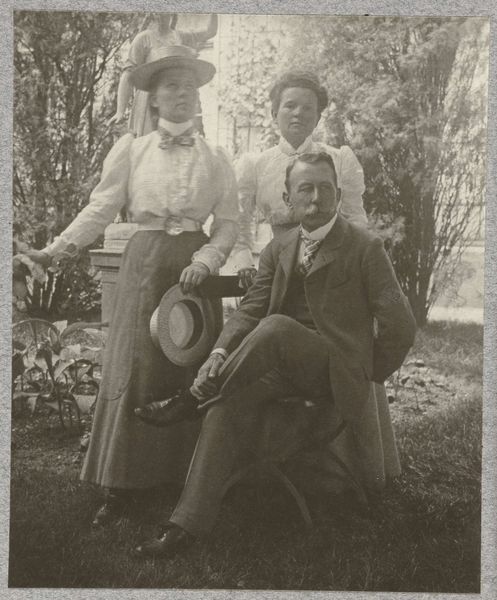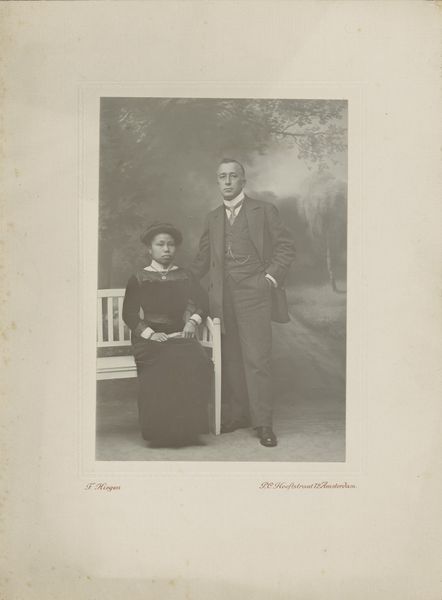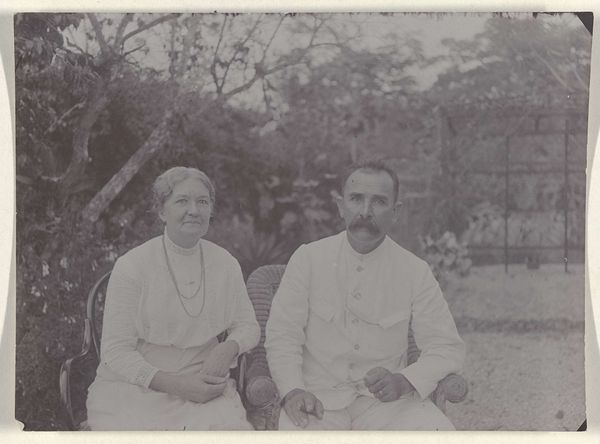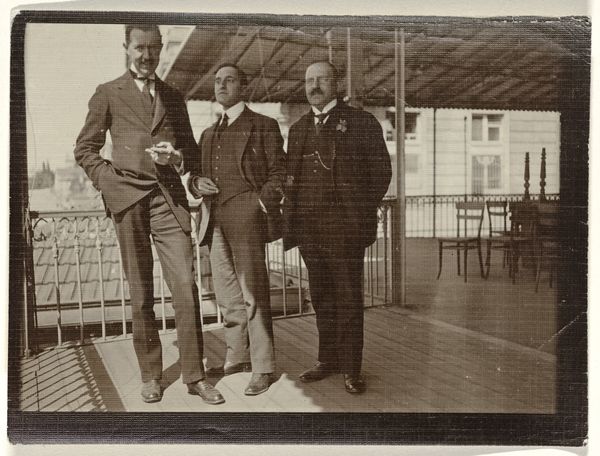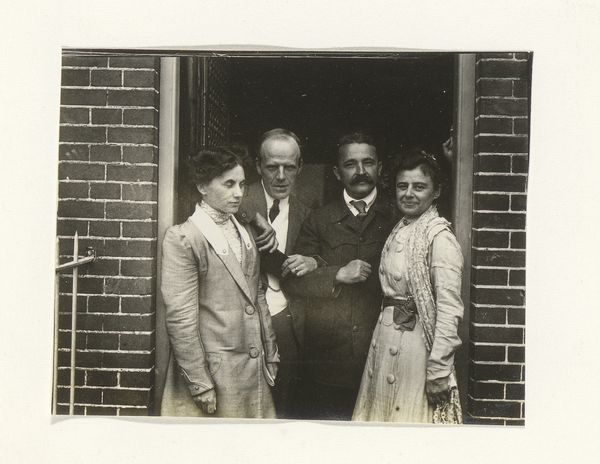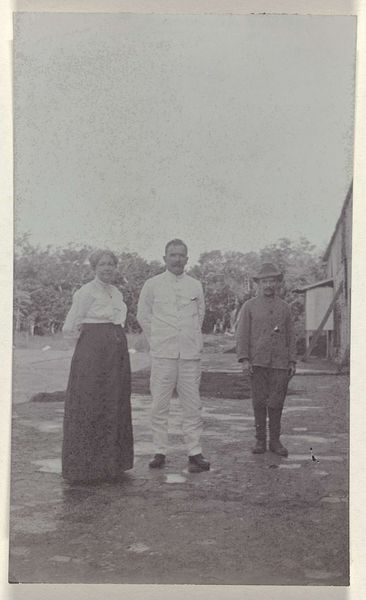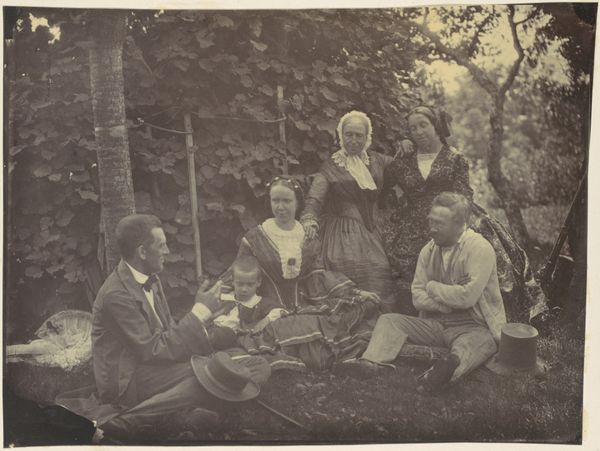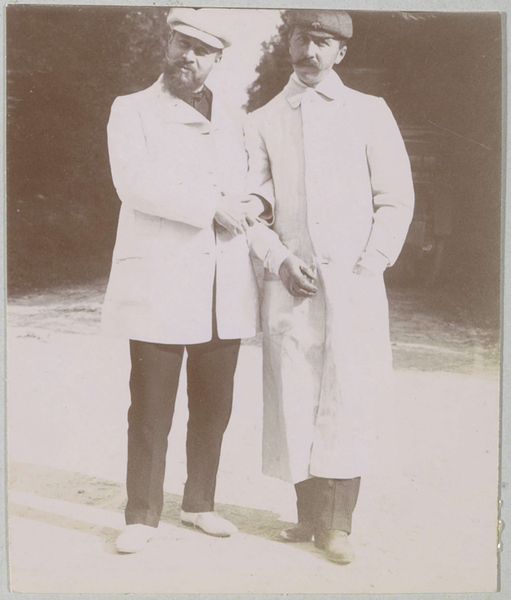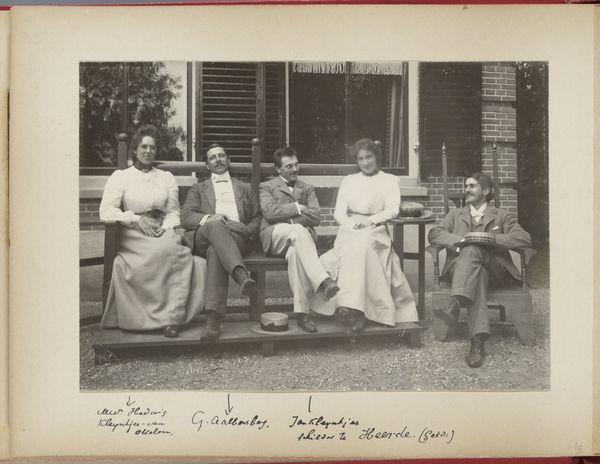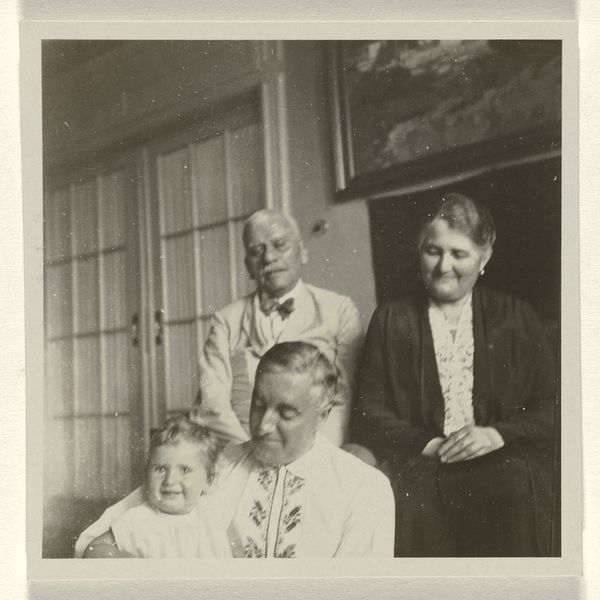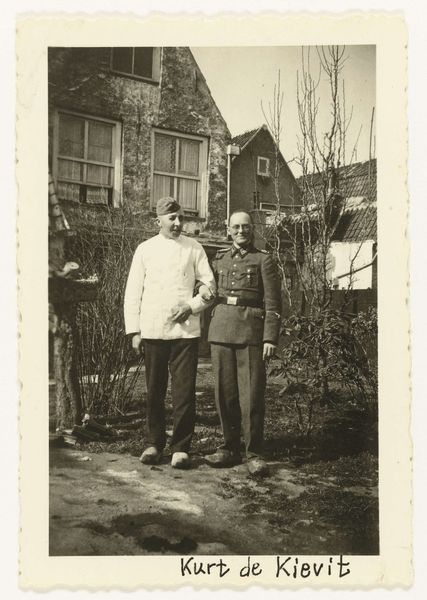
print, photography, gelatin-silver-print
#
portrait
#
print photography
#
pictorialism
# print
#
outdoor photograph
#
archive photography
#
photography
#
historical photography
#
group-portraits
#
gelatin-silver-print
#
realism
Dimensions: height 165 mm, width 106 mm
Copyright: Rijks Museum: Open Domain
Editor: Here we have Augusta Curiel's gelatin silver print, "Jacob Evert Wesenhagen met dochter Frida en zoon Wilhelm," from 1905. There's something very formal and posed about this group portrait. How do you interpret this work, considering its time? Curator: What I see here is a visual negotiation of identity in a specific historical and social context. Looking at this photograph through the lens of postcolonial theory, consider the power dynamics at play in early 20th century Suriname, where Curiel was a pioneering Afro-Surinamese photographer. The Wesenhagen family's deliberate presentation – their clothing, posture, even the table between father and daughter – speaks to a desire for respectability and perhaps assimilation within a colonial framework. Editor: Assimilation? That's interesting. The setting looks quite natural. Curator: Precisely, and that's the tension. While the outdoor setting may suggest a sense of ease, the formality of their attire and the rather stiff poses point to the constraints of societal expectations. Consider the historical context: What did it mean for a family to present themselves in this manner during that era in Suriname? What narratives might they be trying to construct or counteract? How does Curiel, as a photographer of color, engage with and perhaps subvert these dynamics? Editor: I didn't think about it that way, it seems like the family is constructing a reality to overcome prejudice. Curator: Exactly. These visual choices aren't just aesthetic; they are deeply intertwined with issues of race, class, and cultural representation. Thinking critically about these elements allows us to understand the photograph as more than just a portrait – it becomes a document reflecting complex social realities and power structures. Editor: That adds so much depth to the image! Now I'm thinking about the photographer's own identity and what statement she's trying to make. Curator: And it encourages us to think about the individuals represented and their agency, or lack thereof, in shaping their own narratives within the confines of a colonial society. Editor: It really shows how much context matters when viewing art!
Comments
No comments
Be the first to comment and join the conversation on the ultimate creative platform.
